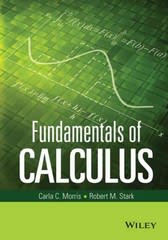Question
Create a Hypothesis Test and Confidence Interval Estimate for Paired Data Using methods from Section 10.4, test ONE claim about the mean difference of a
Create a Hypothesis Test and Confidence Interval Estimate for Paired Data
Using methods from Section 10.4, test ONE claim about the mean difference of a population. Below are some examples if you need an idea:
(Include at least 12 pairs of data)
- A healthy person's average body temperature is warmer in the morning than in the evening.
- The mean number of apps on a wife's phone is greater than the mean number of apps on her husband's phone.
- The mean pinkie length of people's left hand is shorter than their right hand.
- The average number of pets a person has is greater than the average number of children they have.
- A person's height is shorter than their wingspan (middle finger-tip to middle finger-tip when arms are stretched out wide).
On your paper be sure to include:
-yourwritten claim,
-organizeddata values (at least 12 pairs),
-hypothesis, state both hypothesis symbolically and in words
-relevantstatistics (such as sample mean difference and standard deviation and pair size),
-test statistic labeled with appropriate distribution letter (z or t)
-p-value with supporting graph shaded in,
-conclusion, do you reject or fail to reject H0 and why?
-interpretationof your conclusion in the context of your claim.
-95% confidence interval estimate with at least one writteninterpretationrelated to the context of your claim.
It is imperative that you use paired data for this assignment. If your data does not come from a paired sample, you will not receive full credit. Please contact me if you need help constructing your paired sample.
here is an example of the assignment


Step by Step Solution
There are 3 Steps involved in it
Step: 1

Get Instant Access to Expert-Tailored Solutions
See step-by-step solutions with expert insights and AI powered tools for academic success
Step: 2

Step: 3

Ace Your Homework with AI
Get the answers you need in no time with our AI-driven, step-by-step assistance
Get Started


